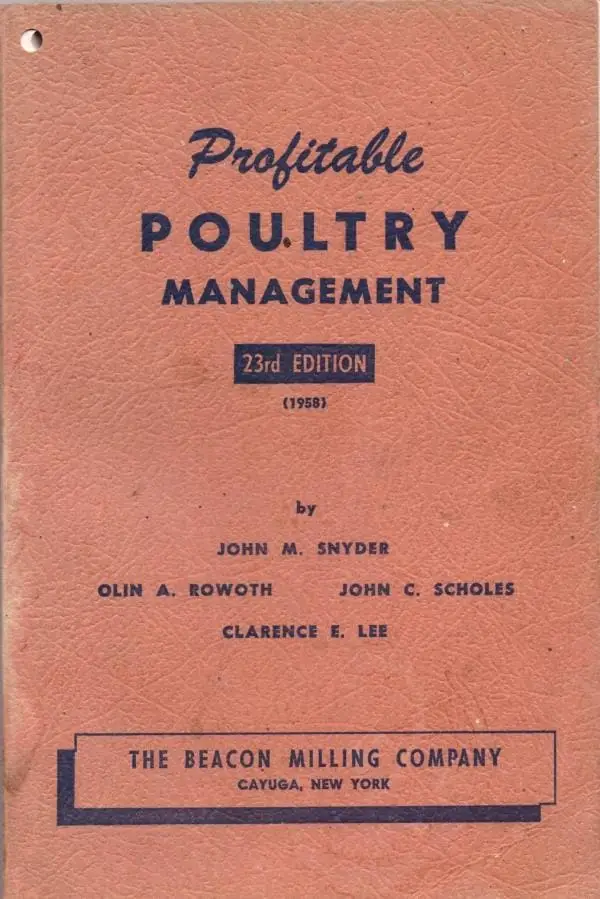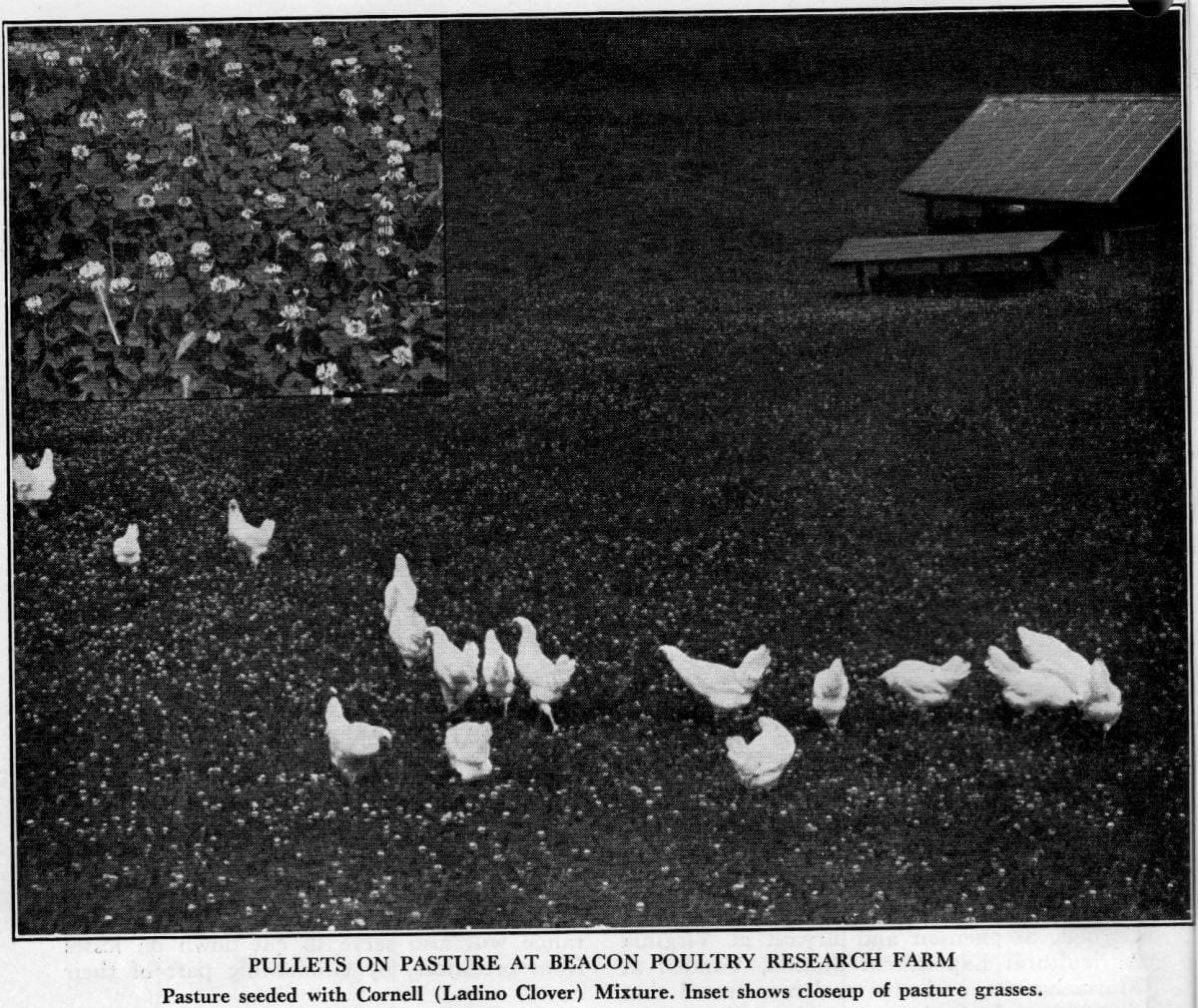In many respects, what we are doing here, farming pasture raised chickens in New York is simply reviving a lost way of life and a lost food tradition.
I have a book on my shelf titled Profitable Poultry Management, 23rd Edition, 1958. In the 1920s the Beacon Milling Company in Cayuga NY began publishing this book, and they kept reprinting editions into the 1960s. What I find especially interesting is that this book documents the shift in our local New York agricultural practices, particularly chicken farming.

Pastured Poultry: The Local Food for New York
Over the last 50 years the majority of American poultry production became concentrated in the southern states. Pre-World War II, however, the various regions of the country fed themselves to a larger extent. New York produced its own chickens, and not just barn raised chickens. New York farmers raised chickens on pasture, thousands and thousands of chickens. New York’s own pastured poultry – imagine that!

It is fascinating to read of Cornell and other universities studying the importance of clover in chicken pastures. And they actually had experimental data showing that pasture raised chickens consumed less feed because of their pasture diets! The book mentions that their study of pasture raised chickens revealed improved digestive system growth in the chickens. They knew all this in the 1920’s, and here we are in the 2020’s trying to restore a broken food system a century later.
As our farm raises chickens and turkeys on pasture, we are reviving an important tradition of keeping the food we grow within our region. Why should we be stocking our pantries and freezers from mega farms in Georgia and California when we have the right resources right here in the Northeast? When a person in New York, Connecticut, or New Jersey eats our pastured chicken, they are supporting a local food network.
Bigger Wasn’t Better
This edition of the book was written in 1958. By that time things were in rushing headlong toward consolidation, expansion, industrialization, commoditization. Although the book still retained building plans and discussion from earlier editions about building pasture shelters for laying hens and meat chickens, their heart wasn’t in it. They are more proud of progress. They are eager to discuss houses for 20,000 chickens. Today the commercial chicken houses have grown even larger, but the inexorable movement of the market was already becoming evident.
My copy of the book has sections reporting about new advancements for additives in chicken feeding, including hormones, antibiotics, and arsenic. At the time, they only saw advantages and were blind to the risks and problems associated with them. The following quote was their expectation for the future of these products:
Is is likely that other non-nutritive additives will be developed in the future that will be of value to the commercial poultryman under certain conditions.
Profitable Poultry Management, 23rd Edition, p. 121
During the early 1950s the Beacon Milling Company began publishing a companion book titled, Profitable Caged Layer Management. Not only were they shifting away from pastures to barns, but inside the barns they were getting chickens off the floor and into cages. Today we see some growing awareness of the unpleasantness of cage rearing for chickens. But in the 1950s cages were the way of the future.
It is fitting that the Beacon Company, proponent of “progressive” farming fell victim to its own vision of success. Beacon bought out smaller mills all around the country. It in turn was acquired by the behemoth Cargill. Cargill quickly shuttered many of the mills, presumably to reduce competition with its own business. All the pasture research farms disappeared too. Progress in this expansionist model only leads to further consolidation into the hands of a smaller pool of owners.
New York Pasture Raised, Organic, Local, Human-Scale: Traditions Worth Reviving
The 1950s and this particular book edition serve as markers for the point in time when the American food system turned its back on pasture raised chickens and began a race for bigger, more crowded confinement barns. Organic farming gave way to chemicals, hormones, and antibiotics. Local New York and regional chicken production transitioned to nationwide distribution. Farms built around families turned into factories dependent on automation.
Wrong Direction Farm and other farms like it represent the optimism of both eaters and farmers that things can be different. Food can be elevating. Eating can be an act that draws both people and landscapes toward restoration. Our meals do not need to support extractive, destructive practices. We can choose to do better with each bite.
Keep It Going
If you would like to learn more about the pasture raised and organic farming we do at Wrong Direction Farm, here are some resources:
- All About Pasture Raised Chicken
- Pasture Raised vs Free Range
- 3 Fundamentals of Feeding Pasture Raised Chickens
- Pasture Raised Makes A Difference
If you have questions about any of this, we really would like to hear from you. We’re glad to deliver our farm’s food to your family, but we want to ensure that we can maintain a connection with our customers. We want to hear from the people who are eating this food!
If you live in New York or the surrounding states, we deliver our Certified Organic, pasture raised chicken and turkey and grass fed beef directly to your home. Learn more about our home delivery. And check out our selection here:
